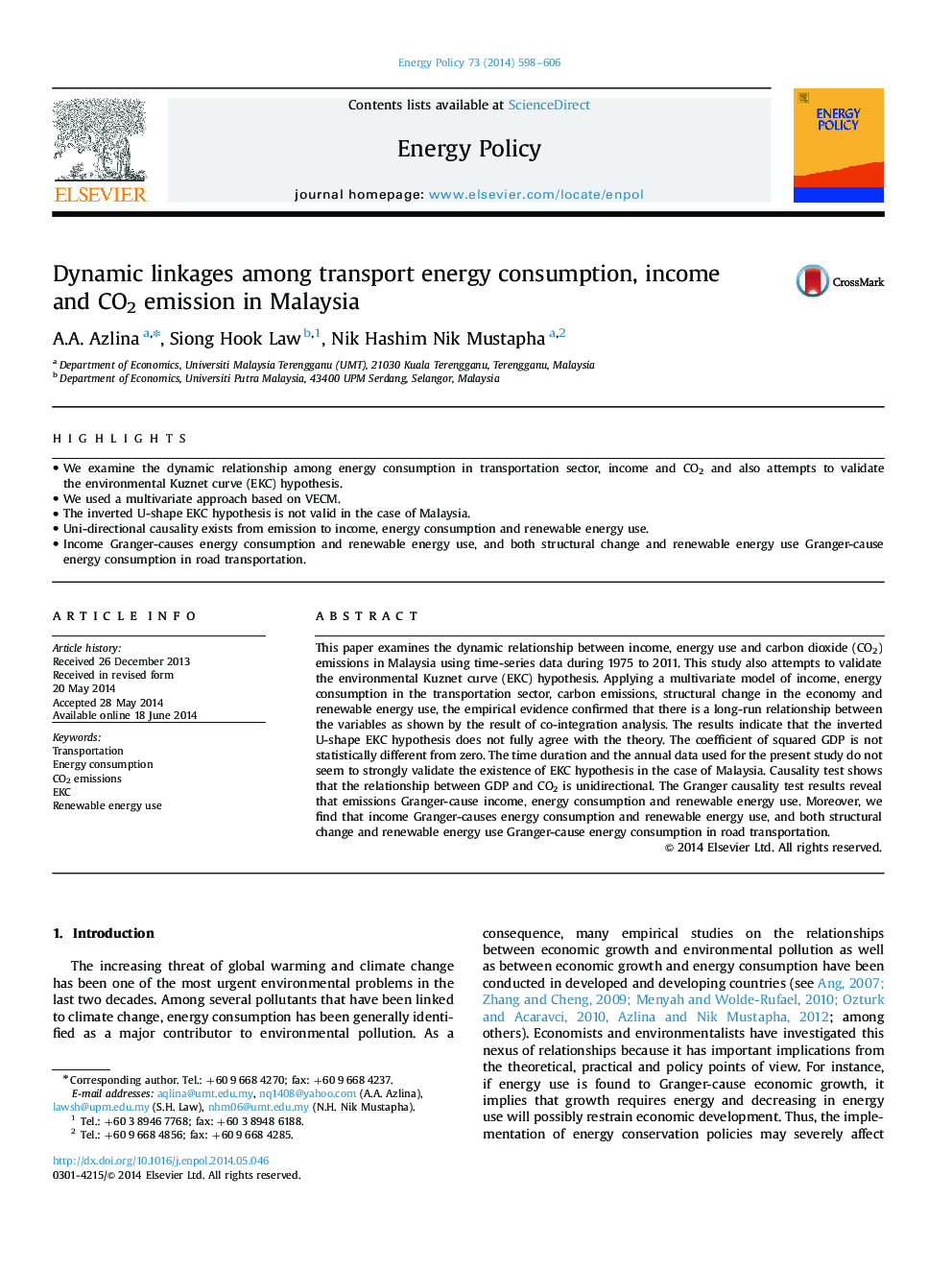| Article ID | Journal | Published Year | Pages | File Type |
|---|---|---|---|---|
| 7402089 | Energy Policy | 2014 | 9 Pages |
Abstract
This paper examines the dynamic relationship between income, energy use and carbon dioxide (CO2) emissions in Malaysia using time-series data during 1975 to 2011. This study also attempts to validate the environmental Kuznet curve (EKC) hypothesis. Applying a multivariate model of income, energy consumption in the transportation sector, carbon emissions, structural change in the economy and renewable energy use, the empirical evidence confirmed that there is a long-run relationship between the variables as shown by the result of co-integration analysis. The results indicate that the inverted U-shape EKC hypothesis does not fully agree with the theory. The coefficient of squared GDP is not statistically different from zero. The time duration and the annual data used for the present study do not seem to strongly validate the existence of EKC hypothesis in the case of Malaysia. Causality test shows that the relationship between GDP and CO2 is unidirectional. The Granger causality test results reveal that emissions Granger-cause income, energy consumption and renewable energy use. Moreover, we find that income Granger-causes energy consumption and renewable energy use, and both structural change and renewable energy use Granger-cause energy consumption in road transportation.
Related Topics
Physical Sciences and Engineering
Energy
Energy Engineering and Power Technology
Authors
A.A. Azlina, Siong Hook Law, Nik Hashim Nik Mustapha,
